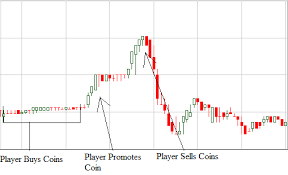ICOs, we’re all aware of them at this point. An initial coin offering (ICO) is a “fundraising mechanism in which new projects sell their underlying crypto tokens.” As I’m writing this, ICOs have raised $1.2B and now surpass early stage VC funding.
That said, not all ICOs are created equal and you have to take the good with the bad if you’re going to invest in this space. As more and more ICOs enter this market, it’s important to have the right framework for evaluating open-source projects.
When I began investing in this space, I couldn’t find a framework to use, so I created my own. This framework consists of 7 questions, which I call the 7 T’s. Each T has its own examples and red flags. By weighing these I can evaluate whether an ICO can drive long term value or whether it’s part of a “pump and dump” scheme.

Where to start:
Everything starts with the project’s whitepaper. To understand what a good whitepaper looks I recommend reading Bitcoin or Ethereum. If a project doesn’t have a whitepaper, that is a big red flag. As I read each project’s whitepaper, I focus on the following:
1.Thesis
Does it align with one of the themes I’m investing in right now?
Many successful investors identify a thesis that guides how their investments. Take USV’s thesis:
“As the market matures, we look for less obvious network effects, infrastructure for the new economy, and enablers of open decentralized data.” — Union Square Ventures
My thesis tells me when to say no and when to invest with conviction. Within crypto, there’s been a lot written about emerging themes like Web3 and fat protocols.
Here’s a list of possible projects that one can invest in within those themes:
- cloud computing
- data storage
- decentralized exchanges
- investment solutions
- prediction markets
- identity protocols
- governance
- smart contract frameworks
- reputation systems
- social networks
- and many others
Red Flag: dApps looking to compete with Google and Facebook by building on a decentralized web. I don’t believe consumers care if the infrastructure is built on Amazon or the Blockchain. And that decentralization is a standalone competitive advantage that will topple the giants.
2. Token Network Effects
Does the token align incentives to simultaneously accelerate growth and token value?
I’ve written about token network effects before. This is one of the most important components of evaluating tokens. Tokens should be used as an incentive mechanism and be widely distributed to kickstart network effects.
In order for this to happen, there needs to be a scarce number of tokens. As the network grows, the token adds value to the platform and accelerates network effects, which increases both demand and price.
Red Flag: If it’s unclear how the token appreciates over time, the project most likely has weak token network effects. These projects often use the token as a way to raise funding. Be very cautious of projects with this dynamic.
3. Team & Leadership
Is there a strong team that can scale an open source network?
I tend to look for teams with blockchain experience or experience building an open source community or platform on a large scale.
Within crypto, the team can have an invisible leader like Bitcoin or have a visible leader like Ethereum. But the same rule applies:
The leader paints a compelling vision and recruits a strong community to help execute against that vision.
Red Flag: If a project has more advisors than team members, that’s usually a red flag. William Mougayar covers this briefly in this article:
“Many advisors are recruited for marketing purposes. Maybe that serves the ICO process via visibility, but to succeed, startups need to surround themselves with people that can mentor them and advise them, and those people need to be experienced and qualified to do so, typically as entrepreneurs themselves or investors who have seen and worked with a lot of startups.”
4. Technology & Developer Ecosystem
Does open-source code exist with supporting developer adoption?
For a lot of these projects to succeed, the technology needs to be sound, and there needs to be a growing developer community around the project. There also needs to be a strong technical reason for the protocol to exist.
Research: Look through the development community around the project. Check out the number of commits on Github and look through the source code.
Red Flag: Nothing on Github.
5. Transparency & Trust
How transparent is the team with the community?
Transparency builds trust which is the foundation for any great community.How transparent is the team with the community? Are they changing directions constantly with no regard to others? Are they sending updates? Are they available to answer questions from the community?
For example, Iconomi does a great job of providing transparency with their monthly AMAs on Reddit. Status posts their daily stand-ups publicly for anyone to view.
You can search for community interaction in places like Telegram, Slack, Reddit, subreddits, Discourse, Twitter, Medium, Facebook or WeChat.
Red Flag: Team changes ICO terms on the fly with no clear explanation. If the team is willing to make these changes, they’ll most likely do that again in the future.
6. Traction & Roadmap
Has the team proved the ability to execute?
What traction has the team built to date? What’s next on the roadmap? Are there any apps being built on the protocol? What’s the developer adoption?
It’s important for the project to have achieved some milestone to demonstrate the ability to execute.
Red Flag: Team has never launched anything ever in the career. The team doesn’t have a clear roadmap or has a long list of 100 things they want to do.
7. Terms
What are the terms of the ICO?
Some terms I look for include delayed founder equity, limited supply, and controlled release of funds.
- Are the funds in a multi-signature wallet?
- Is the team going to destroy or redistribute a significant part of unsold tokens?
- Is the token distribution coming directly from a smart contract?
- Is there a cap on funds raised?
- Is the ICO compliant in your country?
“The founding team should own between 10–50% of the token and should not get liquidity in the first 3 years of the project.” — Nick Tomaino
Takeaways
When I first started to work in tech, it wasn’t crazy to raise an angel or seed round with just an idea. But, over time, the bar got set higher and higher.
The same thing will happen with cryptocurrencies. While it might be the Wild Wild West today, don’t get burned by investing into low quality projects.
Like many investments, investing well in cryptocurrency starts with projects you support, sticking to your thesis, and making those investments with conviction.
